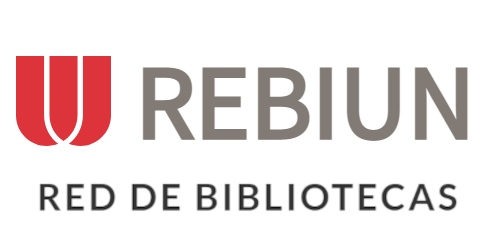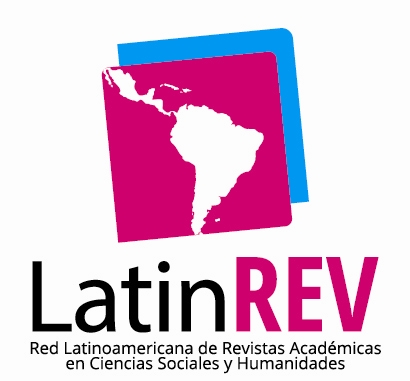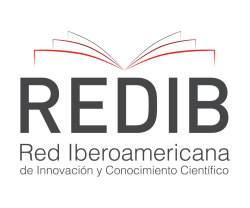Aislamiento y caracterización molecular de hongos rizosféricos solubizadores de fósforo asociados a los cultivos de tomate (Solanum lycopersicum) y arroz (Oriza sativa)
Resumen
Los minerales, especialmente el fósforo es crucial para los suelos agrícolas; donde los hongos solubilizadores de fosfato (HSF) tienen un rol muy importante en la biodisponibilidad de los nutrientes para las plantas. Este trabajo se centró en el aislamiento y caracterización molecular de hongos rizosféricos solubilizadores de fósforo; asociados a cultivos de tomate y arroz. Las cepas aisladas (HSPA 1, HSPT 1 y HSPT4), se inocularon en medio de cultivo NBRIP sólido, con concentraciones de fosfato tricálcico al 1%, 0,50% y 0,10%. La capacidad de solubilización, se determinó por la aproximación del diámetro de formación del halo hialino, frente al perímetro de marcado de las colonias fúngicas. El aislado HSPT4 (cultivo de tomate), demostró el índice mayor en la capacidad de solubilización (2,28 mm) con una concentración de fósforo soluble de 15,50 ± 0,67 mg/L. Se observó una correlación positiva moderada entre la concentración de fósforo y el pH final para concentraciones del 1 y 0,50%, mientras tanto; que para el 0,10% se registró una correlación más débil. La caracterización molecular, a partir de los códigos de barras dirigidos a las regiones ITS 1 e ITS 4; demostró que las cepas aisladas fueron identificadas como HSPA1 (Talaromyces veerkampii); HSPT1 a Talaromyces versatilis y HSPT4 a Talaromyces purpureogenus. Aquí, incorporamos la identificación molecular de dos cepas de hongos competentes (HSPA 1 y HSPT 1); para solubilizar fósforo, este componente investigativo representa su primer reporte a nivel molecular en esta región.
Descargas
Citas
Adhikari, M., Kim, H.S., Park, H.B., Kim, K.Y., Lee, I.K., Byeon, E.J., Woo, J.M., Lee, H.B., & Lee, Y.S. (2022). Characterization of Newly Recorded Talaromyces veerkampii Isolated from Field Soil in Korea based on Morphology and Multigene Sequence Analysis. Kor. J. Mycol, 50(4), 347-355.
Ancona-Canché, K., López-Adrián, S., Espinosa-Aguilar, M., Garduño-Solórzano, G., Toledano-Thompson, T., Narváez, J., & Valdez-Ojeda, R. (2017). Molecular phylogeny and morphologic data of strains of the genus Coelastrella (Chlorophyta, Scenedesmaceae) from a tropical region in North America (Yucatán Península). Botanical Sciences, 95 (3), 527-537.
Arias Mota, R. M., Juárez González, A., Heredia Abarca, G., & De la Cruz Elizondo, Y. (2022). Capacidad fosfato solubilizadora de hongos rizosféricos provenientes de cafetales de Jilotepec, Veracruz. Alianzas y Tendencias BUAP, 7(27), 69-86.
Arias, R.M., Romero, A.J., Bañuelos, J., y De la Cruz, Y. (2019). Inoculación de hongos solubilizadores de fósforo y micorrizas arbusculares en plantas de jitomate. Revista Mexicana de Ciencias Agrícolas, 8(10).
Barroso, C. B., & Nahas, E. (2002). Solubilization of hardly soluble iron and aluminum phosphates by the fungus Aspergillus niger in the soil. First International Meeting on Microbial Phosphate Solubilization. Developments in Plant and Soil Sciences, 102, 193-198.
Carvajal Muñoz, J. S., & Mera Benavides, A. C. (2010). Fertilización biológica: Técnicas de vanguardia para el desarrollo agrícola sostenible. Produc. Limp. 5, 77-96.
Chakraborty, B., Chakraborty, U., Sha, A., Sunar, K., & Dey, P. (2010). Evaluation of phosphate solubilizers from soils of North Bengal and their diversity analysis. World Journal of Agricultural Sciences, 6(2), 195-200.
Cozannet, P., Kidd, M.T, Neto, R.M., y Geraert, P.A. (2017). Complejo multicarbohidrasa de próxima generación que degrada polisacáridos sin almidón, rico en xilanasa y arabinofuranosidasa para mejorar la digestibilidad del alimento para pollos de engorde. Ciencia avícola, 96 (8), 2743-2750.
Elías, F., Woyessa, D., & Muleta, D. (2016). Phosphate solubilization potential of rhizosphere fungi isolated from plants in Jimma Zone, Southwest Ethiopia. International Journal of Microbiology, 1-11.
Fernández, L. A., Zalba, P., Gómez, M. A., & Sagardoy, M. A. (2005). Bacterias solubilizadoras de fosfato inorgánico aisladas de suelos de la región sojera. Ciencia del Suelo, 23(1), 31-37.
Frisvad, J. (1989). La conexión entre la penicila y el aspergilli y las micotoxinas, con especial énfasis en los aislados mal identificados. Archives of Environmental Contamination and Toxicology, 18, 452–467.
Habibah, N., Sri Dhyanaputri, I., Karta, I. W., Cok Dewi, W. H. S., & Choirul Hadi, M. (2018). A simple spectrophotometric method for the quantitative analysis of phosphate in the water samples. Jurnal Sains dan Teknologi, 7(2), 198-204.
Hajjam, Y., & Cherkaoui, S. (2017). The influence of phosphate solubilizing microorganisms on symbiotic nitrogen fixation: Perspectives for sustainable agriculture. Journal of Materials, 8(3), 801-808.
Kenneth, R., Ramírez-Coché, J.A., Castro, O., y Blanco-Meneses, M. (2018). Caracterización morfológica y molecular de Fusarium oxysporum F. SP.Apii asociado a la marchitez del apio en Costa Rica. Agronomía Costarricense, 42(1), 115-126.
Kumar, S., Stecher, G., Li, M., Knyaz, C., & Tamura, K. (2018). MEGA X: Molecular evolutionary genetics analysis across computing platforms. Molecular Biology and Evolution, 35(6), 1547–1549.
Kumar, V., & Narula, N. (1999). Solubilization of inorganic phosphates and growth emergence of wheat as affected by Azotobacter chroococcum mutants. Biology and Fertility of Soils, 28(3), 301–305.
Kumari, M., Taritla, S., Sharma, A., Jayabaskaran, C. (2018). Antiproliferative and Antioxidative Bioactive Compounds in Extracts of Marine-Derived Endophytic Fungus Talaromyces purpureogenus. Frontiers in Microbiology, 9.
Lima-Rivera, D. L., López-Lima, D., Desgarennes, D., Velázquez-Rodríguez, A. S., & Carrión, G. (2016). Phosphate solubilization by fungi with nematicidal potential. Journal of Soil Science and Plant Nutrition, 16(2), 507-524.
Llanos, A., Déjean, S., Neugnot-Roux, V., Francois, J.M., y Parrou, J.L. (2019). Carbon sources and XlnR-dependent transcriptional landscape of CAZymes in the industrial fungus Talaromyces versatilis: when exception seems to be the rule. Microb Cell Fact 18, 14
Mei, C., Chretien, R. L., Amaradasa, B. S., He, Y., Turner, A., & Lowman, S. (2021). Characterization of phosphate solubilizing bacterial endophytes and plant growth promotion in vitro and in greenhouse. Microorganisms, 9(9), 1935. https://doi.org/10.3390/microorganisms9091935
Mittal, V., Singh, O., Nayyar, H., Kaur, J., & Tewari, R. (2008). Stimulatory effect of phosphate-solubilizing fungal strains (Aspergillus awamori and Penicillium citrinum) on the yield of chickpea (Cicer arietinum L. cv. GPF2). Soil Biology and Biochemistry, 40(3), 718-727.
Morales, A., Alvear, M., Valenzuela, E., Castillo, C. E., & Borie, F. (2011). Screening, evaluation and selection of phosphate-solubilising fungi as potential biofertiliser. Journal of Soil Science and Plant Nutrition, 11(4), 89-103.
Moreno, A. P., Osorio, N. W., & González, O. A. (2015). In vitro dissolution of acidulated rock phosphate by phosphate solubilizing microorganisms. Acta Biológica Colombiana, 20(2), 65-71.
Morin, N., Vallaeys, T., Hendrickx, L., Natalie, L., & Wilmotte, A. (2010). An efficient DNA isolation protocol for filamentous cyanobacteria of the genus Arthrospira, 80, 148–154.
Narsian, V., & Patel, H. H. (2000). Aspergillus aculeatus as a rock phosphate solubilizer. Soil Biology and Biochemistry, 32(4), 559-565.
Nautiyal, C. S. (1999). An efficient microbiological growth medium for screening phosphate solubilizing microorganisms. FEMS Microbiology Letters, 170(1), 265–270.
Oliveira, C., Alves, V., Marriel, I., Gómez, E., Scotti, M., Carneiro, M., Guimarães, M., Schaffert, R., & Sa, N. (2009). Phosphate solubilizing microorganisms isolated from rhizosphere of maize cultivated in an-oxisol of the Brazilian Cerrado Biome. Soil Biology & Biochemistry, 41(9), 1782-1787.
Pathmanathan, N., Deshappriya, N., Manamgoda, D. S., & Sandamali, T. G. (2022). Direct Submission. Botany, University of Sri Jayewardenepura.
Pérez-Pérez, R., Forte, I. H., Álvarez, Y. O. S., Benítez, J. C. S., Castillo, D. S. Del, & Pérez-Martínez, S. (2021). Characterization of potassium solubilizing bacteria isolated from corn rhizoplane. Agronomía Colombiana, 39(3), 415–425.
Peterson, S. W., & Jurjevic, Z. (2019). The Talaromyces pinophilus species complex. Fungal Biology, 123(10), 745-762.
Pineda, B. (2014). Hongos solubilizadores de fosfato en suelo de páramo cultivado con papa (Solanum tuberosum). Revista Ciencia en Desarrollo, 5(2): 145-154.
Pradhan, N., & Sukla, L. B. (2006). Solubilization of inorganic phosphates by fungi isolated from agriculture soil. African Journal of Biotechnology, 5(10), 850-854.
Rathore, P., Phanse, N., & Patel, B. (2014). Screening for microorganisms possessing phosphate solubilizing potential. Indian Journal of Research, 3(1), 172-174.
Reddy, M. S., Kumar, S., Babita, K., & Reddy, M. S. (2002). Biosolubilization of poorly soluble rock phosphates by Aspergillus tubingensis and Aspergillus niger. Bioresource Technology, 84(2), 187-189.
Samreen, S., & Kausar, S. (2019). Phosphorus fertilizer: The original and commercial sources. In T. Zhang (Ed.), Phosphorus recovery and recycling. IntechOpen. https://doi.org/10.5772/intechopen.82240
Sandeepani, H. P., & Ratnaweera, P. B. (2020). Antibacterial activity of entomopathogenic fungi isolated from Vespa affinis and Apis dorsata in Sri Lanka. In: International conference on Frontiers in Chemical Technology
Saxena, J., Basu, P., Jaligam, V., & Chandra, S. (2013). Phosphate solubilization by a few fungal strains belonging to the genera Aspergillus and Penicillium. African Journal of Microbiology Research, 7(41), 4862-4869.
Selvi, K. B., Paul, J. J. A., Vijaya, V., & Saraswathi, K. (2017). Analyzing the efficacy of phosphate solubilizing microorganisms by enrichment culture techniques. Biochemistry and Molecular Biology Journal, 3(1), 1-7.
Seshadri, S., Muthukumarasamy, R., Lakshminarasimhan, C., & Ignacimuthu, S. (2000). Solubilization of inorganic phosphates by Azospirillum halopraeferans. Current Science, 79(5), 565-567.
Shambhavi, Kumar, R., Tomar, A., Purushottam, Singh, J., & Singh, S. P. (2020). Isolation and identification of Bacillus species from soil for phosphate, potassium solubilisation and amylase production. International Journal of Current Microbiology and Applied Sciences, 9(5), 415–426.
Silva, L. I. d., Pereira, M. C., Carvalho, A. M. X. d., Buttrós, V. H., Pasqual, M., & Dória, J. (2023). Phosphorus-Solubilizing Microorganisms: A Key to Sustainable Agriculture. Agriculture, 13, 462.
Varsha, M., Nidhi, & Anurag. (2010). Heavy metals in plants: phytoremediation: plants used to remediate heavy metal pollution. Agriculture and Biology Journal of North America, 1(1), 40-46.
Verma, A., & Ekka, A. (2015). Isolation, screening and assessment of phosphate solubiling efficiency of some fungal isolates of Raipur, Chhattisgarh. Journal of Environmental Science Toxicology and Food Technology, 1(1), 29-39.
Vocadlova, K., Lamp, B., Benes, K., Matha, V., Lee, K. Z., & Vilcinskas, A. (2023). Crude Extracts of Talaromyces Strains (Ascomycota) Affect Honey Bee (Apis mellifera) Resistance to Chronic Bee Paralysis Virus. Viruses, 15(2), 343.
Wei, S., Xu, X., & Wang, L. (2021). Four new species of Talaromyces section Talaromyces discovered in China. Mycologia, 113(2), 492-508.
White, T. J., Bruns, T., Lee, S., & Taylor, J. (1990). Amplification and direct sequencing of fungal ribosomal RNA genes for phylogenetics. PCR Protocols: A Guide to Methods and Applications, 18(1), 315–322.
Whitelaw, S., McKeown, K., & Williams, J. (1997). Global health promotion models: Enlightenment or entrapment? Health Education Research, 12(4), 479-490.
Yilmaz, N., Houbraken, J., Hoekstra, E.S., Frisvad, J., Visagie, C.M., Samson, R.A. (2012). Delimitación y caracterización de Talaromyces purpurogenus y especies relacionadas. Persoonia, 29:39-54.
Derechos de autor 2025 Adriana Catalina Demera , Telmo Ariel Escobar Troya , José Alcides Flores Cedeño, Ítalo Antonio Pincay, Katiuska Madelein López, Omar Jacobo Montaño

Esta obra está bajo licencia internacional Creative Commons Reconocimiento 4.0.











.png)




















.png)
1.png)


